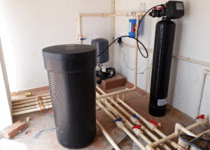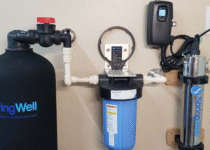Clear Water, Clear Mind: Why Austin Homes Need Regular Water Testing
If you’ve ever poured a glass of water straight from the tap in Austin and noticed a faint taste of minerals, or maybe a cloudy swirl that clears up after a few seconds, you’re not alone. Austin is famous for its limestone-rich soil, and while that makes for gorgeous Hill Country views, it also means our water supply naturally carries more minerals than in other regions. That’s not always a bad thing, but it can raise questions: Is my water safe? Could it be cleaner? Do I need treatment at home?
These questions are why conversations around water testing Austin keep popping up. It’s not just a niche concern for scientists or the city utilities department. It’s something everyday homeowners should care about. And not in a panic-driven, bottled-water-only kind of way, but in a practical, informed sense. Think of it like getting an annual physical—you don’t wait until something’s seriously wrong before checking in.
Why Austin’s Water Has Its Quirks
Living in central Texas comes with unique water challenges. Hard water, for instance, is practically part of the Austin lifestyle. You see it in the cloudy spots on glassware after running the dishwasher, or the way soap doesn’t lather quite as easily. That’s the calcium and magnesium content flexing its muscles.
Beyond hard water, there are also seasonal and environmental factors. Heavy rains can stir up runoff, drought can concentrate certain minerals, and aging pipes in older neighborhoods sometimes leach small amounts of metals. Nothing here means Austin’s water is automatically unsafe—but it does mean your tap’s “personality” might change over time.
The Benefits of Regular Analysis
So, what’s the actual value in testing your water? For starters, peace of mind. When you schedule water quality analysis Austin, you’re essentially running a background check on the liquid that runs through every faucet, showerhead, and appliance in your home. You get to see, in black and white, whether there are elevated levels of contaminants like lead, nitrates, chlorine, or bacteria.
It also helps with practical decisions. For example, if your water test shows high hardness, you can confidently invest in a softening or conditioning system instead of guessing. If chlorine levels are elevated, you might decide on a simple carbon filter. Without testing, it’s like trying to fix a car without ever looking under the hood—you’re left guessing.
Water Conditioning: The Everyday Hero
Now let’s talk about solutions. Plenty of Austin households end up installing a water conditioner Austin system once they understand the mineral content in their supply. Unlike old-school water softeners that remove calcium and magnesium entirely, conditioners often work by altering the structure of minerals so they don’t stick to surfaces. That means fewer crusty faucets, longer-lasting appliances, and showers that actually feel refreshing instead of drying.
It’s not a one-size-fits-all fix, of course. Some homes need filtration for sediment, others need UV treatment for bacteria, and some need a mix of options. But conditioners are one of the most practical upgrades because they directly address the “Austin hard water headache” without overcomplicating things.
Everyday Signs You Might Need Testing
Here’s the thing—most people don’t think about water until there’s a problem staring them in the face. That’s understandable, but there are early signs that testing is overdue:
- Persistent white or chalky residue on faucets and showerheads.
- Skin or hair feeling unusually dry after showers.
- Odd tastes—metallic, earthy, or just “off.”
- Appliances like dishwashers or coffee makers breaking down sooner than expected.
- Family members with stomach sensitivities or allergies that flare up unpredictably.
Sometimes these issues aren’t directly caused by water quality. But getting a test at least rules out that possibility and gives you clarity.
Austin’s Growth and the Pressure on Water
One other angle people don’t always consider: Austin’s population boom. With more homes, businesses, and development, the city’s water system faces increasing demand. That doesn’t mean the quality automatically suffers, but it does mean there’s more strain on infrastructure. Add in climate swings, and you can see why proactive testing at the household level is just smart. It’s like double-checking the basics while the city does its part at scale.
DIY vs Professional Testing
Some homeowners grab inexpensive test strips at the hardware store—and to be fair, that’s better than nothing. Those kits can give you a rough idea about hardness or chlorine. But they’re limited in scope and accuracy. Professional water testing, on the other hand, digs deeper. You’ll get a full breakdown of dozens of potential contaminants, often with recommendations attached.
Think of it like comparing a quick glance in the mirror to a thorough medical exam. Both have their place, but if you want real insight, the latter wins every time.
What to Do After You Get Results
The real power of testing comes after you’ve got the data in hand. If the report shows everything is within safe ranges, you breathe easy and keep living your life. If it flags issues, that’s when you talk solutions—whether it’s adding a filter under the sink, upgrading your whole-home system, or installing that water conditioner we talked about earlier.
In some cases, a small change makes a huge difference. For example, replacing old pipes in a single section of the home or fixing a corroded faucet can eliminate localized problems. The point is, testing takes the guesswork out of the equation.
Wrapping It Up: Water as a Daily Essential
Water isn’t something you can avoid—it’s in your coffee, your cooking, your showers, even your laundry. It’s too central to everyday life to leave to chance. And while Austin’s water system does a solid job overall, that doesn’t mean your home couldn’t benefit from a closer look.
Whether you’re a new homeowner in East Austin or a longtime resident out in the suburbs, it’s worth making water analysis part of your household routine. It’s not about fear—it’s about clarity, confidence, and making sure your home works as smoothly as possible.
At the end of the day, clean water doesn’t just protect your health; it also makes daily living a little bit easier, from spotless glasses to happier skin. And in a city like Austin, where limestone and rapid growth bring quirks to the table, testing is simply part of being proactive. Think of it less as a chore and more as a smart habit—like checking the oil in your car or replacing smoke detector batteries.



